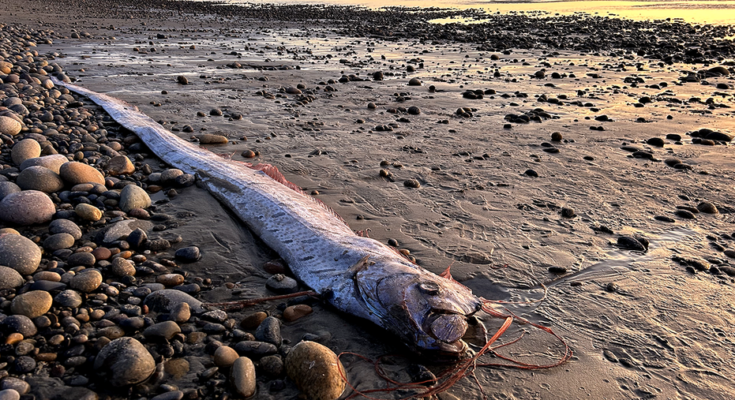A California woman was walking her dog on Grandview Beach in Encinitas when she came across a very rare, deep-sea fish.
Alison Laferriere, who happens to be a PhD candidate at Scripps Institution of Oceanography at the University of San Diego, said she identified the “doomsday fish” knowing it was a “rare occurrence.”
The oarfish, also known as a “doomsday fish,” measures roughly 9-to-10 feet long.
ANGLER LANDS MASSIVE FISH IN MINNESOTA, REVEALS FAVORITE US SPOTS WHERE YOU CAN REEL IN MONSTERS
“As I got closer, I recognized what it was immediately, since I had seen pictures of the one found earlier this year,” said Laferriere to Fox News Digital via email.
Encinitas, California, was recently named one of the 20 best surfing towns in the world, according to National Geographic.
The city is located along six miles of the Pacific Ocean coastline, according to a San Diego government site.
In August, a group spotted a 12-foot, dead oarfish while snorkeling in La Jolla, California.
For more Lifestyle articles, visit foxnews.com/lifestyle
“Several people on the beach also recognized what it was, although there were a couple of surfers who attempted to take it to put it in their friend’s van,” said Laferriere.
She added, “I explained the situation to them, and thankfully they decided to leave it.”
The oarfish is commonly referred to as the “doomsday fish,” as some believe it “foreshadows natural disasters, such as earthquakes or tsunamis,” according to the Ocean Conservancy.
Ben Frable, Scripps Oceanography Marine Vertebrate Collection manager, said in a statement that the increased spotting of oarfish off the coast may have to do with a change in the ocean conditions.
CLICK HERE TO SIGN UP FOR OUR LIFESTYLE NEWSLETTER
“Many researchers have suggested this as to why deep-water fish strand on beaches. Sometimes it may be linked to broader shifts such as the El Niño and La Niña cycle but this is not always the case,” said Frable.
Now 22 oarfish have been reported in California since 1901, according to the Scripps Institution of Oceanography, UC San Diego.
He added, “There was a weak El Niño earlier this year. This wash-up coincided with the recent red tide and Santa Ana winds last week, but many variables could lead to these strandings.”
Scripps Institution of Oceanography in La Jolla advises anyone who believes they have encountered an oarfish to alert lifeguards and to contact them.
